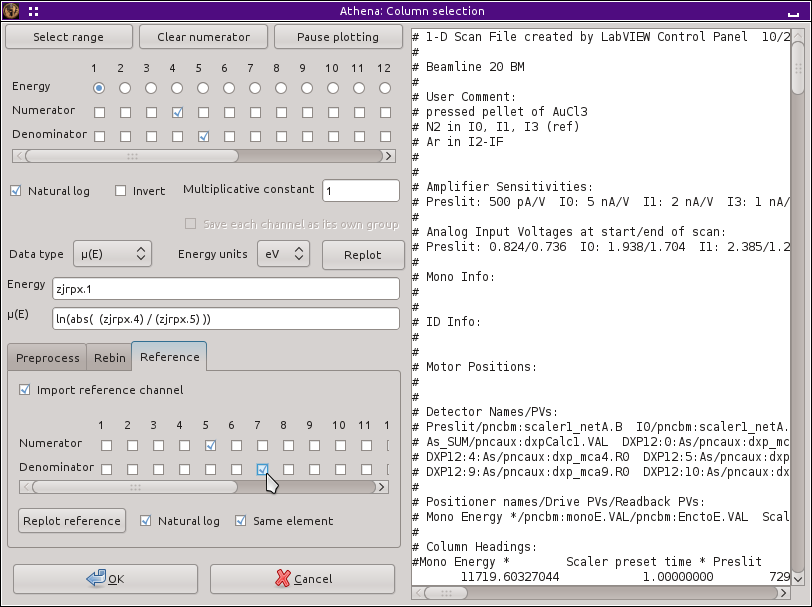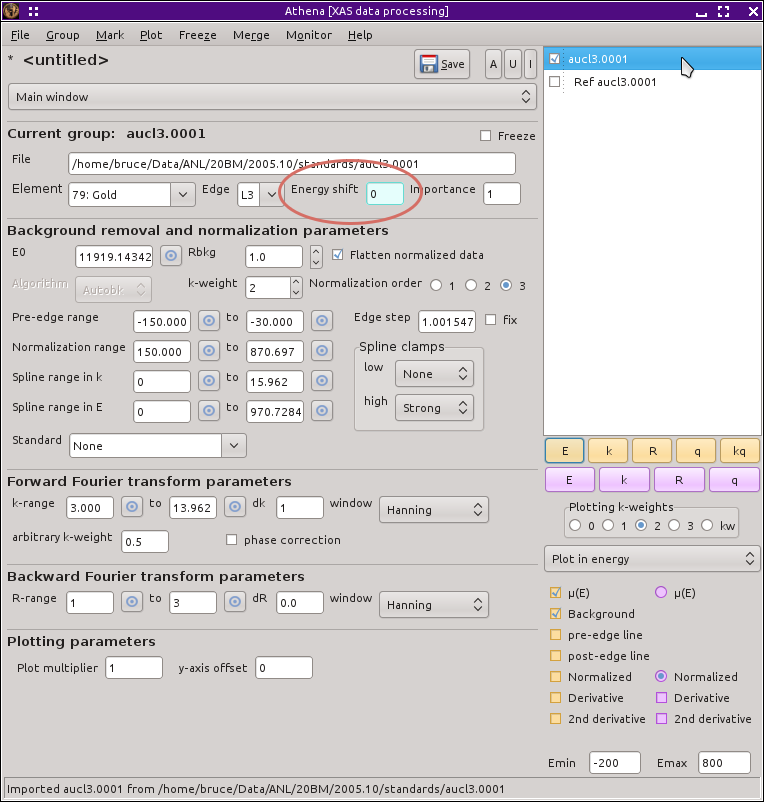3.4. Reference channel¶
A reference spectrum is used by ATHENA as a data alignment standard. It is common to place a third ionization chamber in line after the transmission chamber and to place a good transmission standard between the two. The point of measuring the standard is that it is measured in parallel with your real sample. This standard can then be used to align the actual data using the data alignment tool.
The standard often is a zero-valent foil, but the most important thing is that it is an excellent standard which will yield consistently high-quality data. The other most important thing is that you always use the same sample as your reference standard for every experiment you make at a particular edge. To this end, it is wise to make a library of reference standards and carry them with you to the synchrotron. By using the same standard for every experiment at an edge, you can align any data, even data measured years apart or at different synchrotrons.
The reference channel selection works almost the same as column selection for the data except that you don't need to specify the energy column again – the same column is used. When a reference channel after the transmission channel is used, you should use the transmission channel as the numerator and the reference channel as the denominator. Another common solution to measuring a reference channel is measure elastically scattered radiation through the standard with a PIN diode. In that case, I0 is the numerator and the diode is the denominator.
You can plot the reference channel to make sure that you have selected the correct channels with the Plot reference check button. If your reference standard is of an element with a nearby edge energy, uncheck the button labeled Same element. If you use some other kind of reference measurement that is not a transmission measurement, you can uncheck the Natural log button.
When you click the OK button, the data are imported and inserted into the group list. The reference channel is placed in the group list below its data. The reference channel is just like any other group, with one distinction. The data and its reference channel are tied together in the sense that the values for their «energy shift» parameters will always be the same.
This relationship is shown visually by the change in color of the text in the box for «energy shift», as seen in this screenshot.
When you change the value of «energy shift» for the reference, the value of «energy shift» for the data changes as well. (And vice versa!) This feature of reference channels is put to good use in data alignment.
Occasionally, it is useful to tie two data groups together in this way. This can be done by marking the two groups you want to tie together as data and reference, then selecting .
Todo
ATHENA is missing the ability to tie together three or more data groups in a reference relationship – that would be useful for multi-element detector data and some other situations.
DEMETER is copyright © 2009-2016 Bruce Ravel – This document is copyright © 2016 Bruce Ravel
This document is licensed under The Creative Commons Attribution-ShareAlike License.
If DEMETER and this document are useful to you, please consider supporting The Creative Commons.


